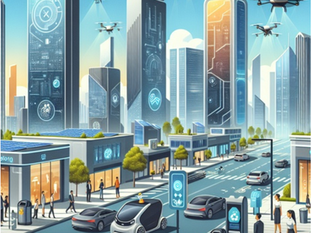
Transforming Cities: Electrifying Mobility and Comprehensive Planning #smarttransport
Sep 22, 2024
1 min read
2
16
Cities are at the forefront of a mobility revolution. As urban populations grow and climate change concerns mount, cities worldwide are prioritizing electric vehicles (EVs) and comprehensive transportation planning to create more sustainable, efficient, and equitable transportation systems. #smarttransport

Key Examples:
LinkUs Initiative in Central Ohio: This ambitious initiative aims to modernize public transit, expand infrastructure, and promote multimodal transportation.
Dallas' Electrification Commitment: The city has pledged to electrify its entire vehicle fleet by 2040, partnering with Ford Pro to install EV charging infrastructure.
Benefits of These Initiatives:
Reduced Emissions: Transitioning to electric vehicles significantly reduces greenhouse gas emissions.
Improved Air Quality: Cleaner air leads to better health outcomes for residents.
Enhanced Sustainability: Sustainable transportation systems contribute to a greener and more resilient city.
Increased Efficiency: Electric vehicles and smart charging infrastructure optimize operations and reduce costs.
Improved Accessibility: Expanded public transit and multimodal options enhance accessibility for all residents.
The Road to a Sustainable Future
These initiatives demonstrate the importance of a comprehensive approach to urban mobility. By combining electrification efforts with thoughtful planning, cities can create transportation systems that are not only sustainable but also meet the needs of their growing populations.
Key Takeaways:
Electrification is Essential: Transitioning to electric vehicles is a crucial step towards reducing emissions and improving air quality.
Comprehensive Planning is Key: Integrating various modes of transportation and considering infrastructure needs is essential for a successful transition.
Public-Private Partnerships: Collaborations between cities and private companies can accelerate progress and leverage resources.
As cities continue to embrace these transformative solutions, we can look forward to a future where urban mobility is cleaner, more efficient, and more sustainable.





